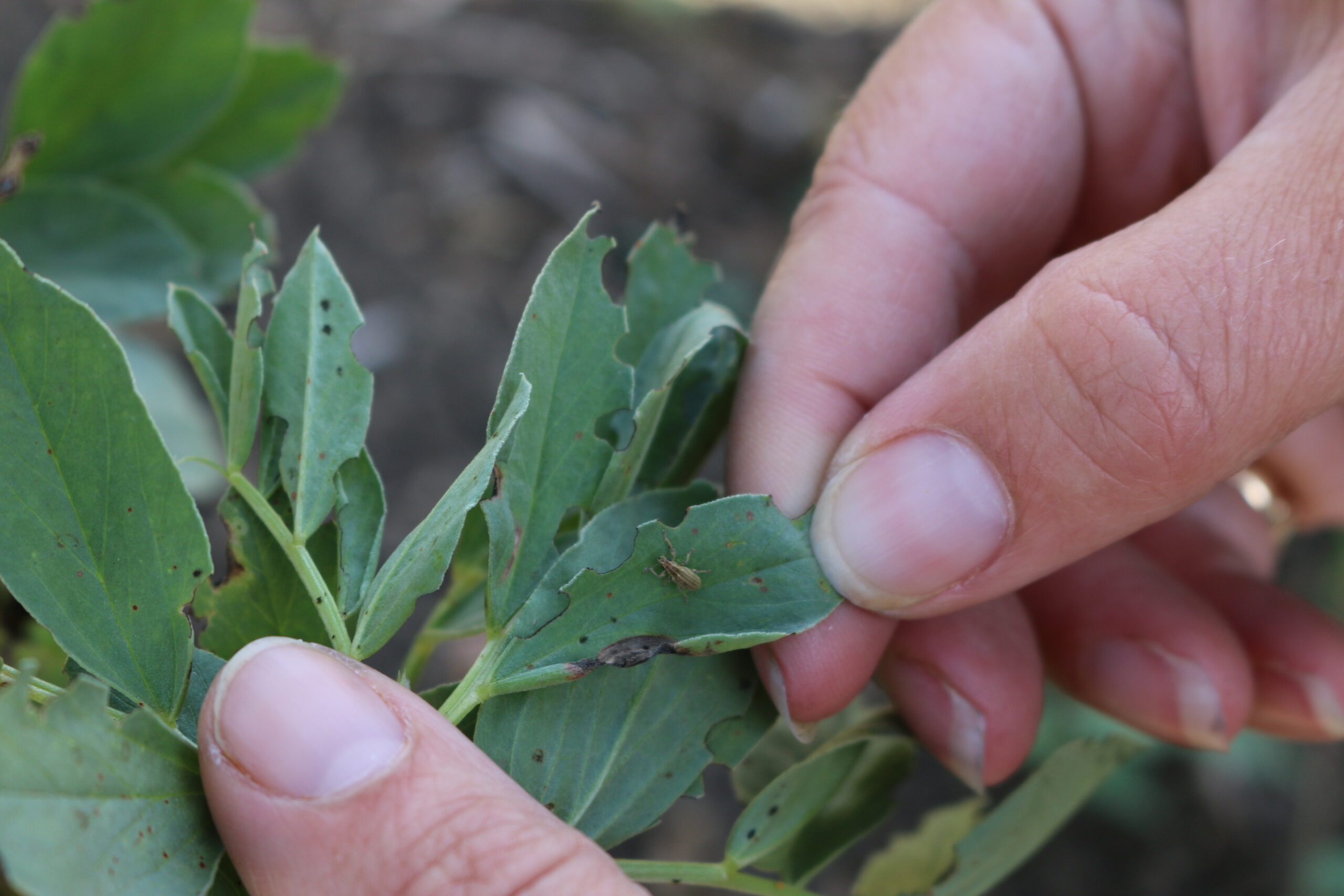By Field Heroes
As pulse growers and agronomists scout fields for insects this season, it is important to distinguish between damaging pests and beneficial bugs. Although they may not be readily apparent, there is a host of predaceous and parasitic insects keeping pest populations in check.
Known affectionately as Field Heroes, these hard-working insects have been in the spotlight in recent years thanks to an educational campaign of the same name. Field Heroes is supported by entomologists across the Prairies and funded by the Western Grains Research Foundation.
Sherrilyn Phelps, Saskatchewan Pulse Growers’ Director of Research & Development, is appreciative of the initiative. “It is critical for growers and agronomists to know which beneficial insects are helping to manage the pest populations in their fields,” she says.
Pea Aphids Impact Pod Development
Pea aphids are one of the biggest insect issues for lentil, pea, and faba bean growers in Saskatchewan. “During reproductive stages they can affect the number of flowers that actually form pods. Then during pod development, aphids suck out resources that the plant needs and that can impact the amount of pod fill that can occur,” says Phelps.
If populations are high enough, these pests can impact both yield and quality. Fortunately, there are several Field Heroes at work in pulse fields to keep damage to a minimum.
“Our advice with pea aphids is you have to scout regularly during early flowering to mid podding. Once the aphids are found in the field you then have to check every couple days to see where the populations are going – if they are increasing in numbers, staying the same, or decreasing. You also have to evaluate the beneficials that might be there as well and give them time to do their job.”
Phelps adds that it is great for growers to know there are predators at work. For example, lady beetles play a significant role in pea aphid control. In fact, one lady beetle larva can eat as many as 160 aphids in 24 hours.
The parasitoid wasp known as Aphidius ervi is also a natural enemy of the pea aphid. The small, black wasps lay a single egg inside of an aphid, which hatches into a larva that consumes the aphid from the inside out.


Be On the Lookout for Lygus Bugs

Photo credit: “k7861-1” by USDAgov is licensed under CC by 2.0
According to Phelps, lygus bugs are increasingly a concern in faba beans. Both adults and nymphs pierce plant tissue and suck plant sap with their needle-like mouthparts, while also injecting digestive enzymes that can cause damage.
“They pierce right through the pods and cause holes or spots on the seeds,” says Phelps. “This opens up the pods for infection by disease, but it also downgrades the seeds coming off.” Lygus- damaged faba seeds develop dark perforations, which poses a serious quality issue for consumer markets.
Field Heroes who work to keep these pests at bay include damsel bugs, green lacewing, and parasitoid wasps. Peristenus mellipes and Peristenus digoneutis are tiny specialist parasitoids that attack only Lygus bugs. They lay their eggs inside lygus bug nymphs, which ultimately kills the host when the larva emerges to pupate.
Grasshopper Damage Greatest in Dry Conditions
Phelps says pulse growers should also keep a close eye on grasshoppers – especially if environmental conditions are conducive.
“If it is dry, there is less material out there for them to eat and they tend to do more damage,” she says. “When there is less grass in the ditches, then they start moving into the fields.”
Grasshoppers cause the most harm when feeding occurs between the bud stage to early pod development. Fortunately, ground beetles, some species of bee flies, tachinid flies, robber flies, and spiders are all beneficial insects that can help keep the damaging populations in check.
Scouting Tips and Techniques
Agronomists are encouraged to work with growers to scout fields weekly during the season to check for the number of insects and species present in the crop. A new resource at FieldHeroes.ca – “Pest and Predators Field Guide” – is a great tool to use while scouting. It is full of reference images and helpful tips.
A sweep-net is another useful scouting tool. Videos are posted on FieldHeroes.ca to show the proper technique for sweep- netting. Of course, a key step is evaluating what is in the net – are they pollinators, insect predators, parasitoids, or insect pests? Growers do not need to identify everything in their net, but they should get to know the most common beneficial insects. That way they will be able to protect the insects who are working hard for them.
Published June 2021


